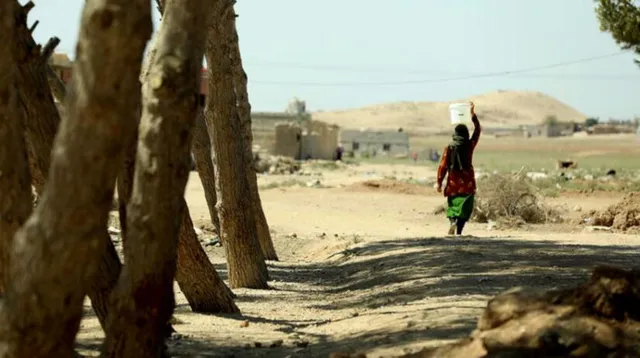The U.S. embassy in Syria tweeted on the X platform (formerly Twitter) that Syria is currently facing its worst drought in over 70 years, severely impacting crops and food security. USAID Syria’s collaborations with farmers in northeast Syria aim to mitigate the food crisis and enhance community resilience against climate change.
The tweet coincided with World Day to Combat Desertification on June 17. Meanwhile, the Autonomous Administration’s media released alarming statistics on drought and desertification in northern and eastern Syria. According to a study by the Environment Agency of the Autonomous Administration of North and East Syria, approximately 15,000 hectares have already been desertified, with another 85 percent under threat. Experts warn that desertification now poses a risk to large swathes of Syria.
Syrian, Lebanese Officials Discuss Water Security Cooperation
Aref Muslim, an environmental official and researcher quoted by the Hawar news agency of the Autonomous Administration, noted an increase in desertification compared to previous years. He attributed this to the Syrian crisis and the lack of environmental control, describing the situation as worsening.
A field study published by the Autonomous Administration identifies southern Deir-ez-Zor, Raqqa, Tabqa, and Hassakeh as the regions most susceptible to desertification due to climate change, escalating droughts, and rising rates of soil erosion and salinization. Experts caution that the desertification crisis in northern and eastern Syria is not confined to these regions alone but could spread to others, as indicated by early warning systems for droughts and climate change.
Moreover, the proliferation of desert plants in previously unaffected areas, coupled with physical, biological, economic, and social evidence, underscores the ongoing advancement of desertification. Experts stress the imperative of unified efforts to combat this issue.
In the past year, experts have warned that the drought situation could exacerbate if global warming rises by an additional two degrees from pre-industrial levels, a scenario projected for the coming decades unless fossil fuel usage is rapidly curtailed.
Asharq al-Awsat newspaper’s investigation in early June highlighted the drought’s impact in Damascus, Qamishli, Idlib, and Daraa. It underscored the threat to Syria’s economic hub east of the Euphrates, where consecutive years of inadequate seasonal rainfall imperil the agricultural yield, exacerbated by soaring costs of seeds, fertilizers, and land cultivation fees in the northwest and south of the country.
This article was translated and edited by The Syrian Observer. The Syrian Observer has not verified the content of this story. Responsibility for the information and views set out in this article lies entirely with the author.


